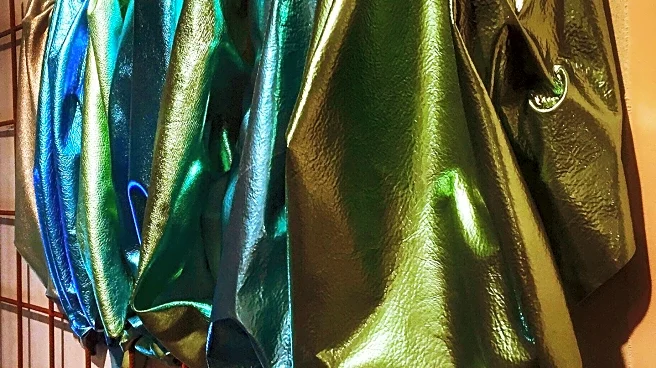What is the story about?
What's Happening?
A San Francisco art gallery is drawing attention with its unique exhibit featuring art made from trash. The gallery has transformed curbside castoffs into center-stage pieces, showcasing the creativity and innovation of artists who repurpose discarded materials into compelling artworks. This exhibit highlights the growing trend of using recycled materials in art, emphasizing sustainability and environmental consciousness. The gallery aims to challenge traditional perceptions of art by demonstrating how everyday waste can be reimagined into aesthetically pleasing and thought-provoking pieces.
Why It's Important?
The exhibit underscores the importance of sustainability in the art world, reflecting broader societal shifts towards environmental responsibility. By using trash as a medium, artists are not only reducing waste but also sparking conversations about consumption and the environmental impact of human activities. This approach can inspire other industries to consider sustainable practices and encourage individuals to rethink their relationship with waste. The gallery's initiative may influence public policy and cultural attitudes towards recycling and environmental conservation, promoting a more sustainable future.
What's Next?
The success of this exhibit could lead to more galleries and artists adopting similar practices, potentially expanding the market for recycled art. As public interest grows, there may be increased support for policies that encourage sustainable art practices and funding for artists who focus on environmental themes. Additionally, educational programs could be developed to teach young artists about the benefits of using recycled materials, fostering a new generation of environmentally conscious creators.
Beyond the Headlines
This exhibit also raises ethical questions about the value and definition of art. By elevating trash to the status of art, the gallery challenges traditional notions of artistic worth and invites viewers to reconsider what constitutes valuable art. This could lead to broader discussions about the role of art in society and its potential to drive social change.
AI Generated Content
Do you find this article useful?












